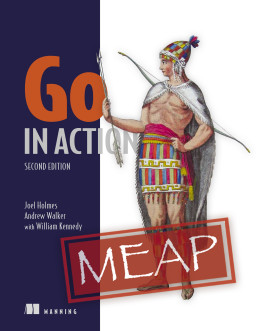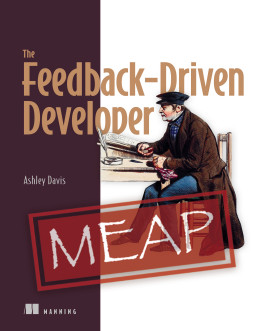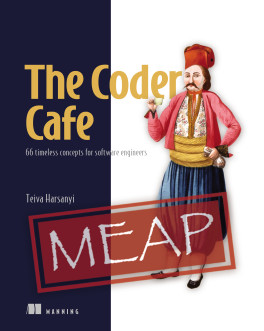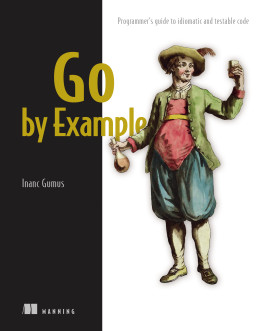pro $24.99 per month
- access to all Manning books, MEAPs, liveVideos, liveProjects, and audiobooks!
- choose one free eBook per month to keep
- exclusive 50% discount on all purchases
- renews monthly, pause or cancel renewal anytime
lite $19.99 per month
- access to all Manning books, including MEAPs!
team
5, 10 or 20 seats+ for your team - learn more

Look inside
Spot errors in your Go code you didn’t even know you were making and boost your productivity by avoiding common mistakes and pitfalls.
100 Go Mistakes and How to Avoid Them shows you how to:
100 Go Mistakes and How to Avoid Them puts a spotlight on common errors in Go code you might not even know you’re making. You’ll explore key areas of the language such as concurrency, testing, data structures, and more—and learn how to avoid and fix mistakes in your own projects. As you go, you’ll navigate the tricky bits of handling JSON data and HTTP services, discover best practices for Go code organization, and learn how to use slices efficiently.
100 Go Mistakes and How to Avoid Them shows you how to:
- Dodge the most common mistakes made by Go developers
- Structure and organize your Go application
- Handle data and control structures efficiently
- Deal with errors in an idiomatic manner
- Improve your concurrency skills
- Optimize your code
- Make your application production-ready and improve testing quality
100 Go Mistakes and How to Avoid Them puts a spotlight on common errors in Go code you might not even know you’re making. You’ll explore key areas of the language such as concurrency, testing, data structures, and more—and learn how to avoid and fix mistakes in your own projects. As you go, you’ll navigate the tricky bits of handling JSON data and HTTP services, discover best practices for Go code organization, and learn how to use slices efficiently.
about the technology
Understanding mistakes is the best way to improve the quality of your code. This unique book examines 100 bugs and inefficiencies common to Go applications, along with tips and techniques to avoid making them in your own projects.about the book
100 Go Mistakes and How to Avoid Them shows you how to replace common programming problems in Go with idiomatic, expressive code. In it, you’ll explore dozens of interesting examples and case studies as you learn to spot mistakes that might appear in your own applications. Expert author Teiva Harsanyi organizes the error avoidance techniques into convenient categories, ranging from types and strings to concurrency and testing.what's inside
- Identify and squash code-level bugs
- Avoid problems with application structure and design
- Perfect your data and control structures
- Optimize your code by eliminating inefficiencies
Required reading for Go developers before they touch code in production. It’s the Go equivalent of Effective Java.
Clear and effective examples. Armed with the understanding of how and why mistakes occur, you’re equipped to avoid costly errors.
Teiva Harsanyi catalogs real problems and easy-to-miss ‘gotchas,’ and delves into the nuanced world of why they happen. Not having this book will be your 101st mistake.
Learn good habits by identifying bad ones. The writing is engaging, the examples relevant, and the insights useful.
choose your plan
team
monthly
annual
$49.99
$499.99
only $41.67 per month
- five seats for your team
- access to all Manning books, MEAPs, liveVideos, liveProjects, and audiobooks!
- choose another free product every time you renew
- choose twelve free products per year
- exclusive 50% discount on all purchases
- renews monthly, pause or cancel renewal anytime
- renews annually, pause or cancel renewal anytime
-
![]() 100 Go Mistakes and How to Avoid Them ebook for free
100 Go Mistakes and How to Avoid Them ebook for free
choose your plan
team
monthly
annual
$49.99
$499.99
only $41.67 per month
- five seats for your team
- access to all Manning books, MEAPs, liveVideos, liveProjects, and audiobooks!
- choose another free product every time you renew
- choose twelve free products per year
- exclusive 50% discount on all purchases
- renews monthly, pause or cancel renewal anytime
- renews annually, pause or cancel renewal anytime
-
![]() 100 Go Mistakes and How to Avoid Them ebook for free
100 Go Mistakes and How to Avoid Them ebook for free
choose your plan
team
monthly
annual
$49.99
$499.99
only $41.67 per month
- five seats for your team
- access to all Manning books, MEAPs, liveVideos, liveProjects, and audiobooks!
- choose another free product every time you renew
- choose twelve free products per year
- exclusive 50% discount on all purchases
- renews monthly, pause or cancel renewal anytime
- renews annually, pause or cancel renewal anytime
-
![]() 100 Go Mistakes and How to Avoid Them ebook for free
100 Go Mistakes and How to Avoid Them ebook for free




















 100 Go Mistakes and How to Avoid Them ebook for free
100 Go Mistakes and How to Avoid Them ebook for free